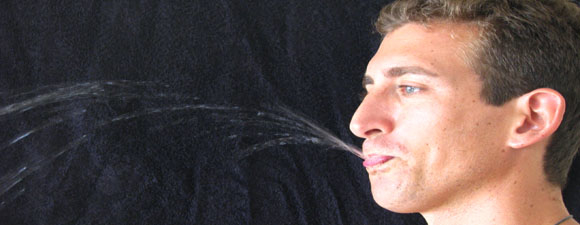Most conservators would never go so far as to lick or spit on a painting. They make their own disposable swabs using cotton and wooden skewers, lightly moisten them, and roll them on the object they’re working on to remove dirt.
The trick is to stay hydrated – having a dry mouth is the biggest danger conservators run into with this technique.
So why is spit an effective cleaning solution? Human saliva contains the enzyme amylase, which is meant to break down food but also works well for breaking down dirt and grime on an object. It’s also a free and accessible resource, and it’s mild enough that there's no need for ventilation or any other safety precautions, as with other cleaning agents, when using it.
Despite the many virtues of spit cleaning, there will always be people outside of the conservation field who find it gross and disgusting. In treatment proposals, it is sometimes referred to as a “mild enzymatic solution” – no lies there, but it sounds a little bit more professional!
Want to know more? Click here.
